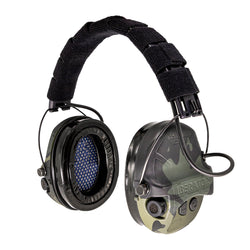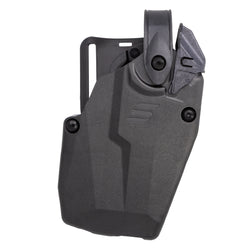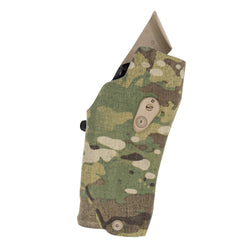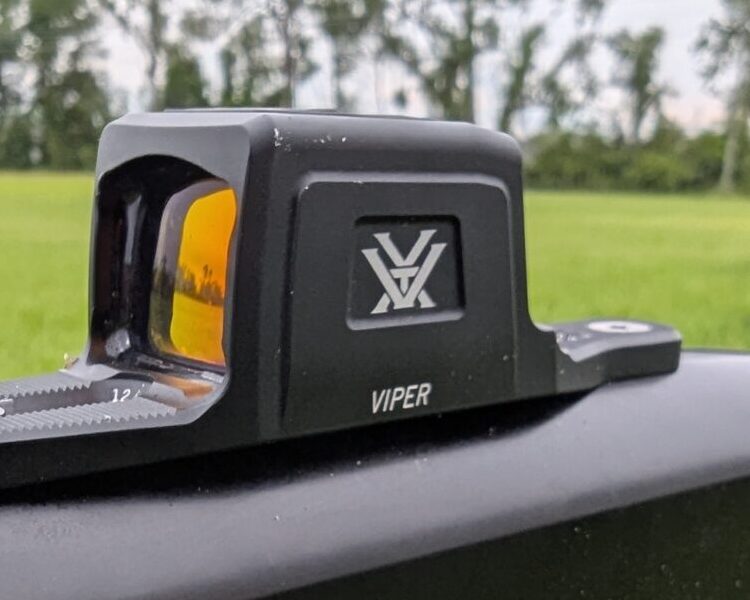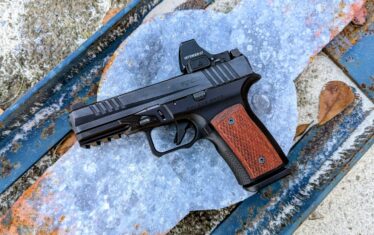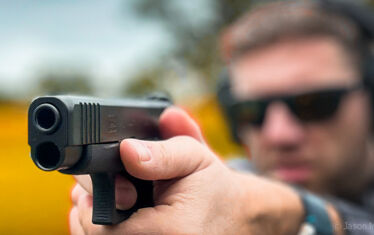Vortex tries its hardest to encompass all of the optical market. If they produced cameras next year, I wouldn’t be surprised. They tackle red dots, LPVOs, long-range glass, spotting scopes, binoculars, and some categories I’m undoubtedly missing. A new Viper red dot might seem like a small addition, but it’s not just another red dot—it’s a dedicated shotgun optic.
If you’re looking for a purpose-built shotgun optic, this review covers the Vortex Viper Universal Shotgun Red Dot in depth: features, performance, and versatility.
Plenty of optics work well for shotguns. Your barebones Aimpoint T-1-style red dot is great, as long as it’s mounted low. Personally, I tend to prefer handgun red dots.
However, we’ve never seen a company produce a dedicated shotgun optic—until now. Vortex sent me this unit to test and review, and as my loan period comes to an end, I’m ready to share my thoughts.
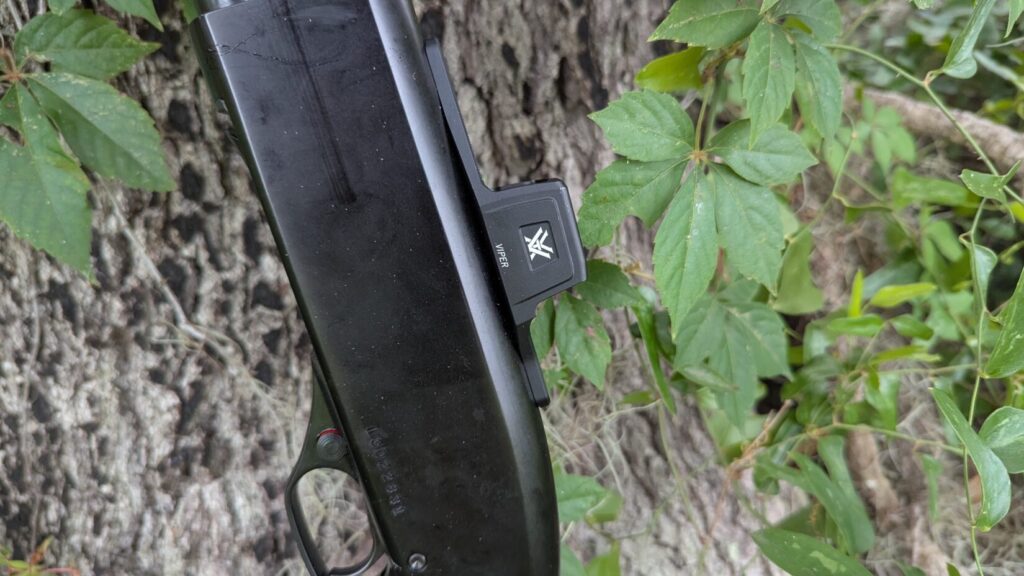
Quick Specs
- Mounting Footprint: Integrated. For Drilled and Tapped Shotguns
- Dot Size: 3MOA
- Dot Color: Bright Red
- Battery Type: CR2032
- Battery Run Time: 50,000 hours
- Magnification: 1X
- Length: 4.86″
- Weight: 2.14 oz.
The Vortex Viper: Shotgun Optic Perfection
The big kicker to this optic is its universal mounting design. Shotguns that are drilled and tapped rarely have the same pattern. Mossberg does it differently from Benelli, and Benelli does it differently from Beretta. Typically, you mount a rail, then attach the optic. If you’re lucky, you can get a low-profile mount like the Defender CoSight. (Shill alert: I helped with the design of the CoSight.)
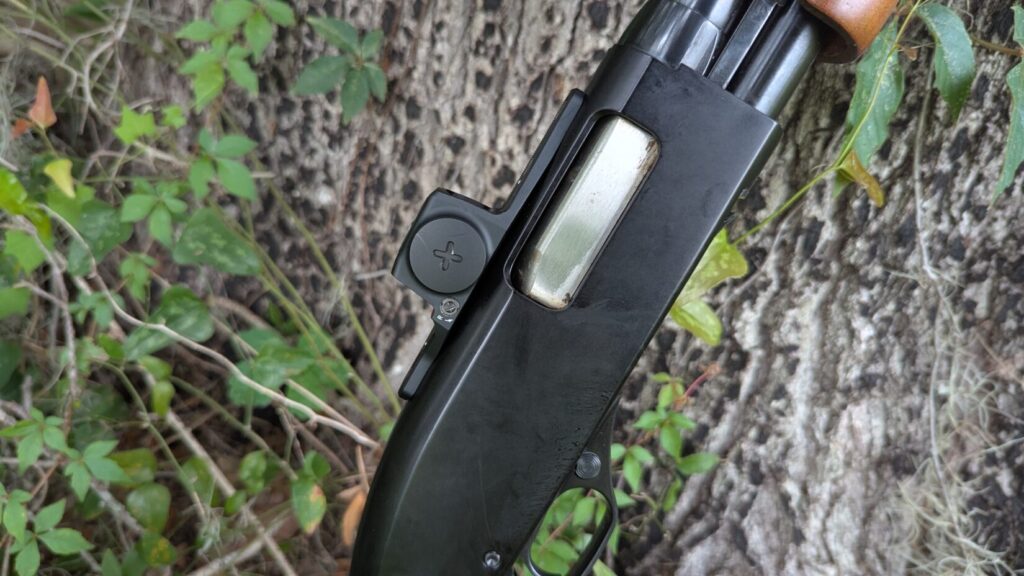
The universal mount also improves compatibility with a wide range of shotguns and even some rifles, reducing the need for custom adapters.
The Viper does you one better—it combines the mount and optic into one design. This keeps the optic low and helps prevent stacked tolerances. If we can avoid stacked tolerances, we should. Also, mounts aren’t cheap, so Vortex can roll that cost into the optic and potentially save you some cash.
The mount features three different ports for screws. Up front, a long channel aligns with a variety of set screw points on the receiver. The inside of this channel is textured, giving the bolt something to nestle against.
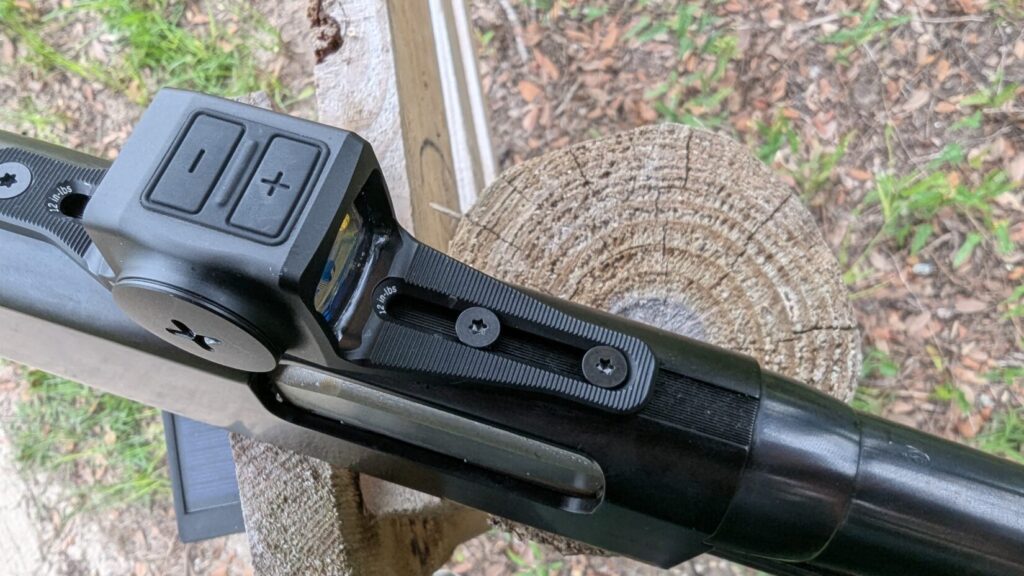
The back of the optic features a single screw slot and a small rear channel. The combination of these three screw ports allows the Viper to mount to a ton of shotguns—too many to list.
Over a dozen companies, both big and small, are compatible. The full list can be found here. It even includes guns long out of production, like the Winchester 1300.
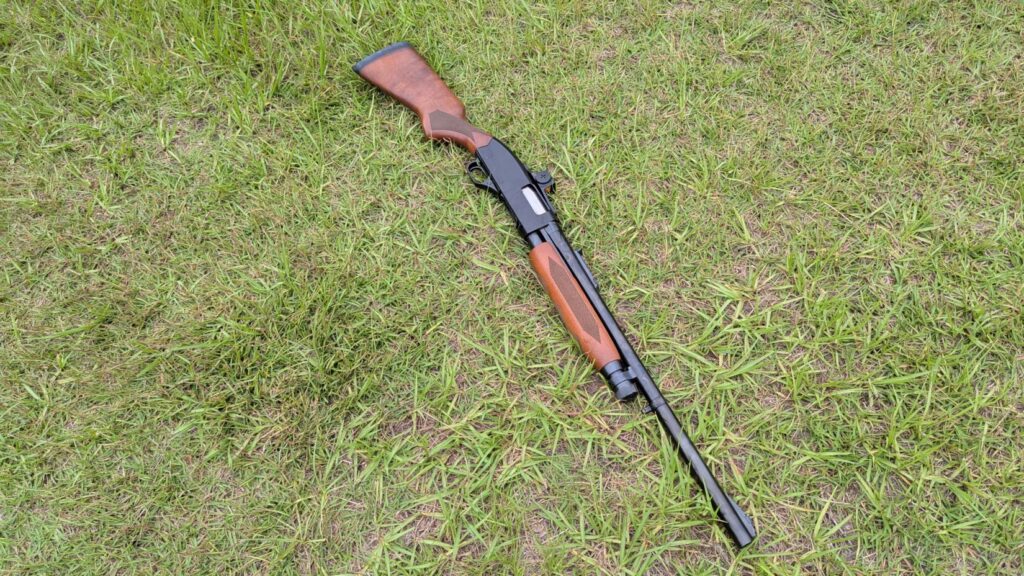
The Viper is not limited to shotguns; certain lever-action rifles and Henry models are also compatible. It can also be mounted on several non-shotguns. This includes a multitude of Henry rifles, including lever guns and the Homesteader. It’s a nice touch to fit more than just shotguns and sit nice and low.
Beyond the Mount: Why Low Placement Matters on Shotguns
Beyond the impressive mounting system, the Vortex Viper delivers exactly what I want from a shotgun optic. It sits low—but why is that important?
First, you want a good, solid cheek weld on the gun. If you don’t have a good cheek weld, especially on a 12-gauge, you will get beat up by the gun. A low-mounted optic helps control recoil and reduce discomfort.
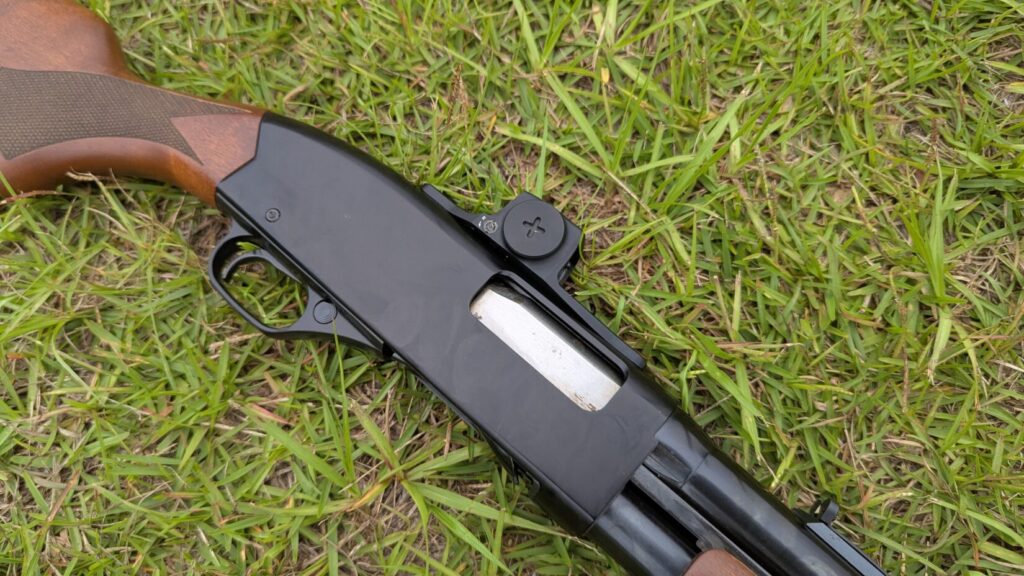
Second, a low-mounted optic helps make various tasks easier with a shotgun. If you have to retract a shell from the side saddle, you want the optic out of the way. And, you don’t want your knuckles to be harassed when manipulating the charging handle of a semi-auto shotgun.
The Viper sits low enough to co-witness with many shotgun iron sights. It works with ghost rings and rifle sights, but likely won’t sit low enough to work with most beads.
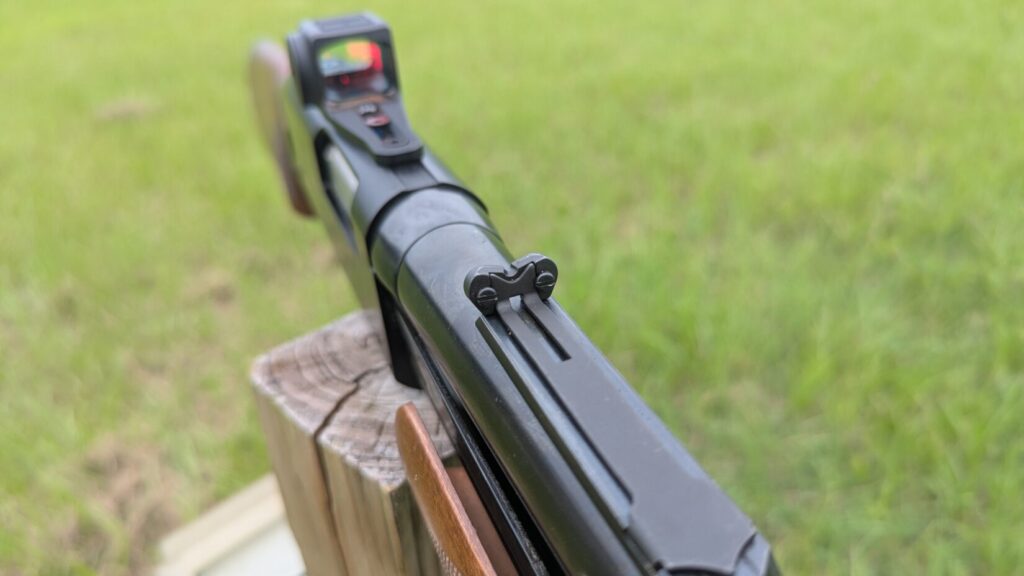
The Vortex Viper is available in a standard 3 MOA dot version and a multi-reticle version. If you’re a shotgunner, go with the multi-reticle design. It gives you seven different reticles that are combinations of a 3 MOA dot, a 32 MOA circle, and a 65 MOA circle. My favorite option combines the 32 MOA circle with the 65 MOA circle. I’ll explain why later.
Finally, the Viper uses an enclosed emitter design, preventing dirt, rain, and debris from getting between the emitter and the lens. It’s the better design for total reliability.
Understanding the Viper’s Red Dot Functionality
I’ve talked a lot about the Viper as a shotgun optic, but I haven’t discussed some of its inherent traits. For example, the Viper includes a shake-awake feature. It automatically shuts off after 10 minutes of no movement. When it detects motion again, it powers back up to the reticle and brightness setting you left it on.
The optic has 12 settings total: ten daytime and two night vision. The battery mounts in a slide slot, and a single CR2032 will last 50,000 hours on setting 6.

The optic weighs 2.14 ounces (including the mount) and is made from 6061 aluminum. Regarding water, fog, and shockproofing, Vortex is vague, only stating that it withstands harsh weather, a wide range of temperatures, and significant recoil and impact. I wouldn’t call it submersible, but for most hunters and home defenders, it’s more than sufficient.
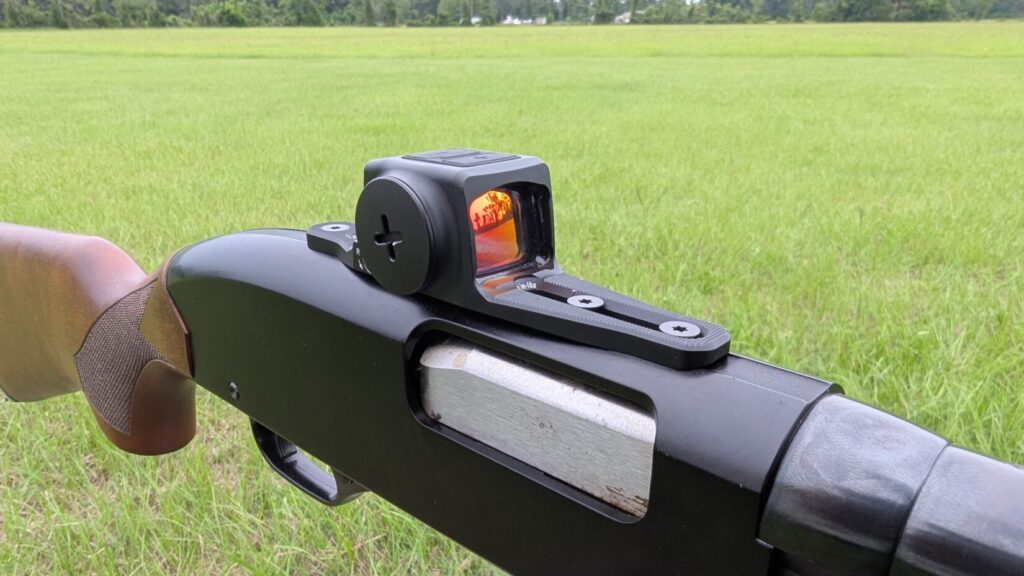
Testing the Vortex Viper on the Range
Each click is 1 MOA, and with a shotgun firing buckshot, that’s way more precise than I need. I do know turkey hunters taking headshots want that precision, and this optic is clearly aimed at that market. It’s also capable enough for slugs.
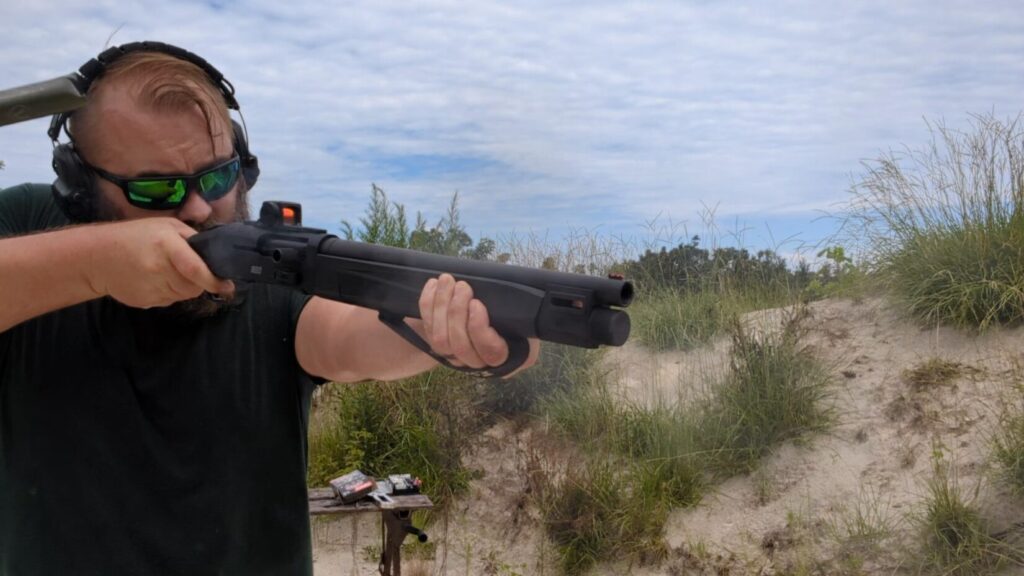
The 32 MOA and 65 MOA circle combination with the 3 MOA dot in the center is perfect for me. I zero the dot, and then use the circles as a bit of a spread reminder. I know that within 12 yards, every pellet of my Federal Flitecontrol buckshot will hit inside the 32 MOA.
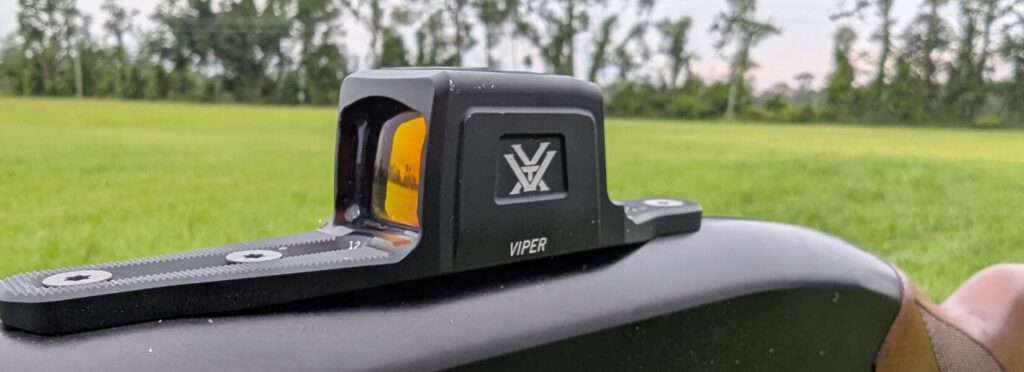
In that same range, most normal buckshots will land within that 65 MOA circle. When I’m aiming my repeating claymore in a home defense scenario, I know that if I put that circle on the target, my pellets will land inside that target. That gives me total pellet accountability.
Beyond being a good choice for patterning my guns and knowing pellet accountability, I also get a huge reticle that’s quick and easy to use. When I’m going from the low ready to on target, all I need to do is fill the circle up with the target and let it rip.
Speed and Accuracy Drills with the Vortex Viper
In Ready Up drills at ten yards, I achieved 0.54 seconds from low ready to target—faster than my previous 0.65-second best.
The big reticle also makes follow-up shots faster. Two shots from a pump gun at ten yards were consistently 0.77 seconds. The big reticle falls right back onto target, and as soon as I see that, I know I’m going to hit when I pull the trigger.
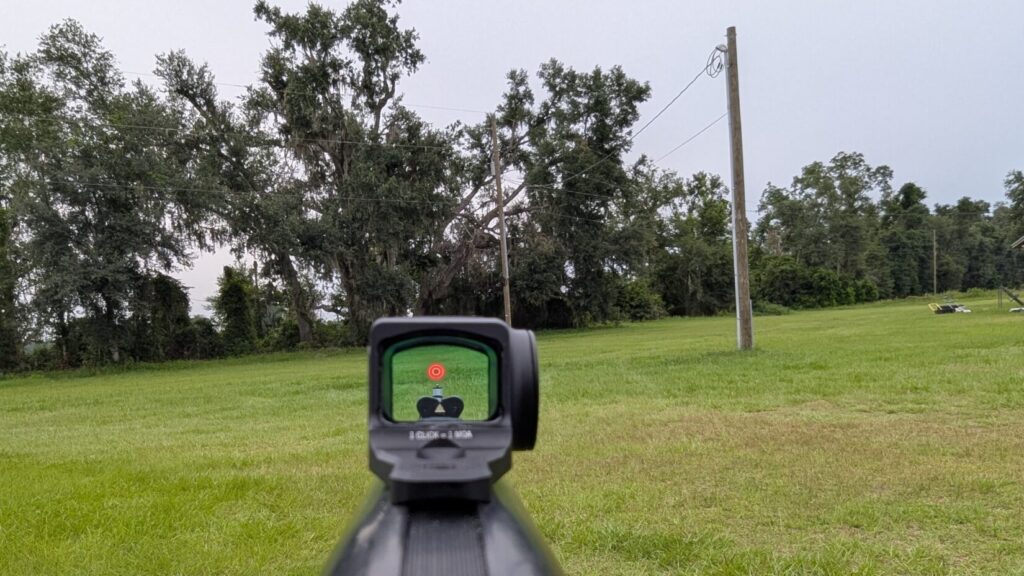
Driving the gun between multiple targets is just as easy. The big reticle remains eye-catching and allows for those quick transitions. Since I can use buckshot’s spread to its advantage, I can shoot faster than I would with normal reticles and a rifle. Half fill the circle with the target and hit the trigger.
Low-Light Performance of the Vortex Viper
Home defense and duty can happen at any time, so I was curious as to how well the optic works in dim lighting. I put a Surefire Scout on my gun and headed outdoors after sunset.
The reticle got bright enough to be easily seen, and there were no low-light issues to speak of. The reticle performs well in any light condition. It’s surprisingly crisp, and there aren’t any noticeable refresh rate issues.
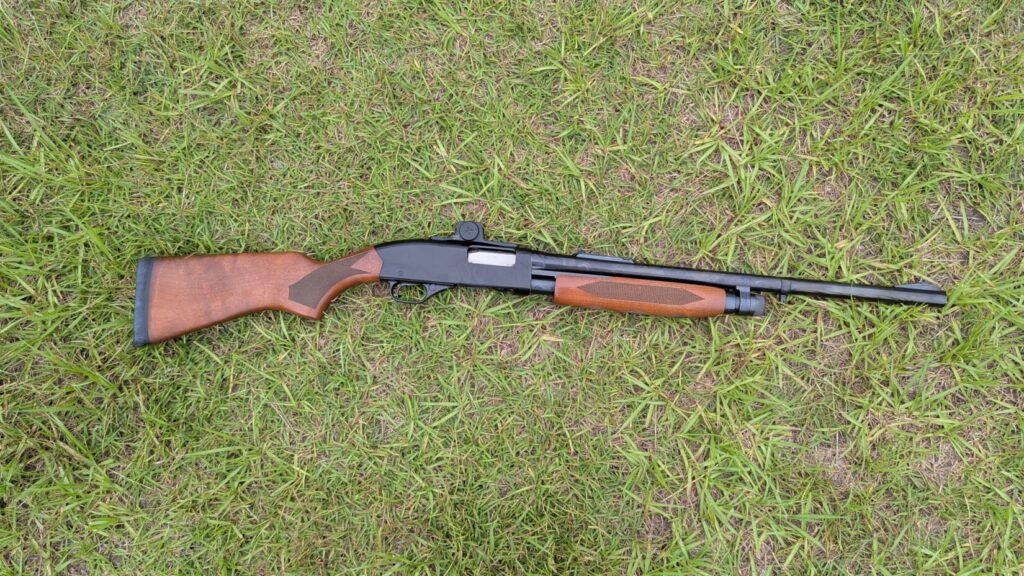
The Vortex Viper is everything I want in a dedicated shotgun optic. I hope it sparks more conversation about shotgun optics and encourages more options in this category. If not, at least we have one outstanding choice.
Frequently Asked Questions
Is the Vortex Viper compatible with all shotguns?
The Viper is designed for shotguns with drilled and tapped receivers. Its universal mounting system ensures compatibility with a wide range of models.
Can the Viper be used on firearms other than shotguns?
Yes, the Viper can be mounted on various firearms, including lever-action rifles and certain handguns, provided they have a suitable mounting surface.
How do I adjust the reticle brightness?
Brightness is adjusted using the “+” and “-” buttons on the side of the optic. There are 12 settings in total, catering to different lighting conditions.
What is the battery life of the Viper?
The Viper offers up to 50,000 hours of battery life on setting 6, thanks to its efficient power management system.
Is the Viper waterproof?
Yes, the Viper is designed to withstand harsh weather conditions, making it suitable for various outdoor environments.
How do I mount the Viper on my shotgun?
Mounting involves aligning the optic’s rear mounting hole with your shotgun’s receiver and securing it with the included screws. Detailed instructions are provided in the user manual.
Can I co-witness the Viper with my shotgun’s iron sights?
The Viper’s low-profile design allows for co-witnessing with many shotgun iron sights, enhancing aiming precision.


